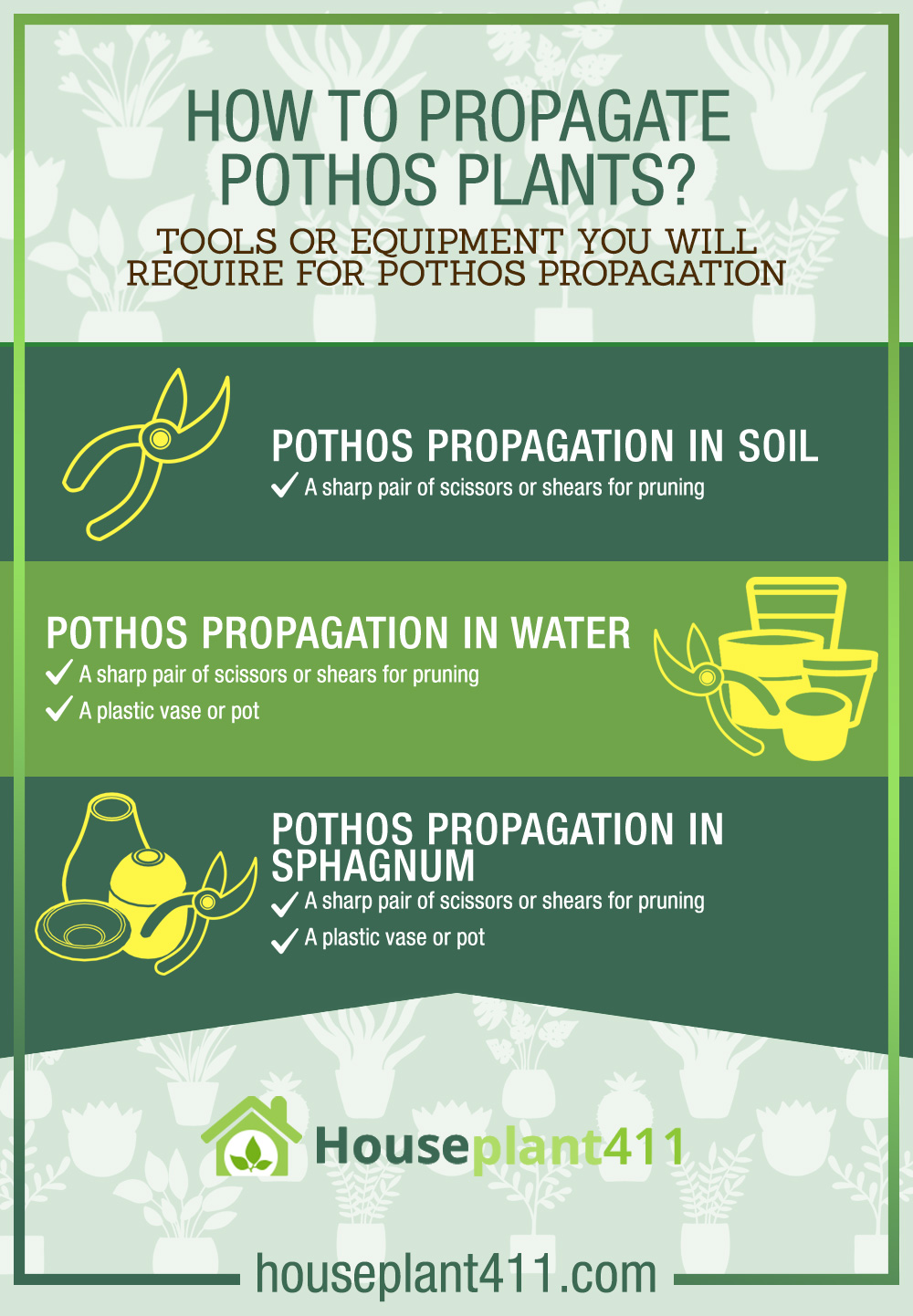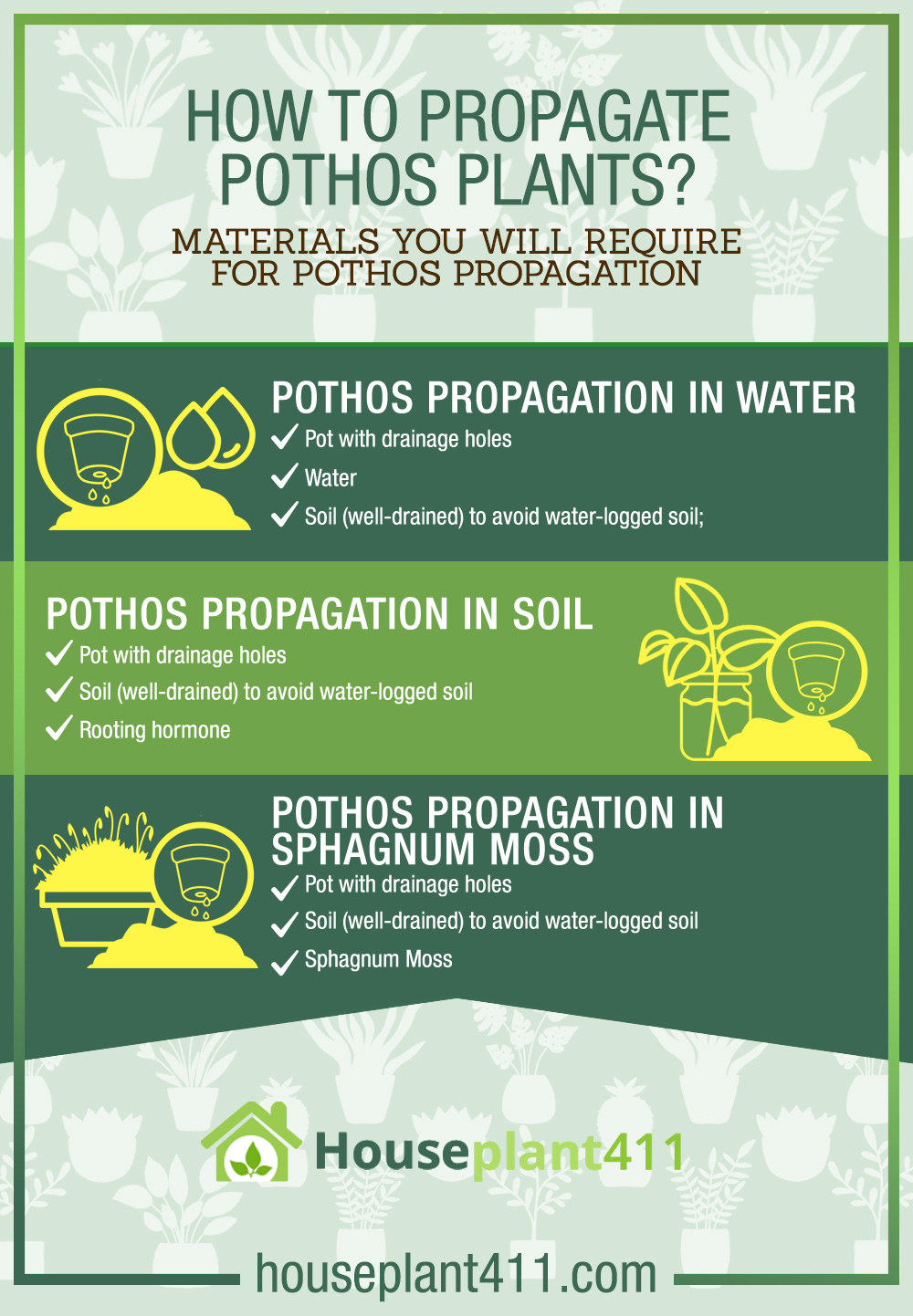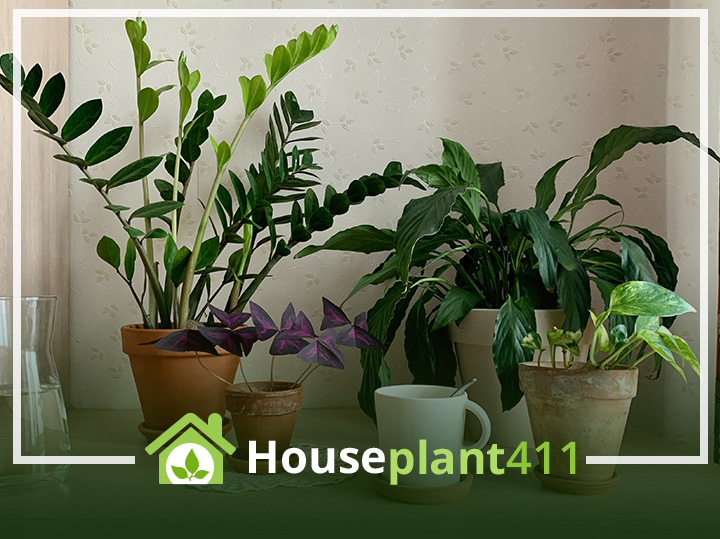Pothos are beautiful and vibrant plants that are among the easiest to grow and most popular houseplants to add to your collection. They are ideal for both expert and new gardeners since they thrive in low-light situations and can withstand some neglect. Pathos is enjoyable and straightforward to grow, but you can also quickly propagate them. It is so easy that once you get the hang of it, that’s all you’ll want to do.
Growing additional pothos plants for free or enlarging your present plant is possible through plant propagation. These tropical plants’ three most prevalent propagation methods are soil, water, and sphagnum moss.
These methods may all be used to spread these plants successfully. We’ll go through all three approaches so you can select the one that’s best for you. So, keep reading to learn how to make more pothos plants from your existing plant. Before we get into the propagation steps, let’s dive first to see the best time to propagate pothos plants.
What Is the Best Time to Propagate Your Pothos Plants?
The ideal months for pothos propagation are summer and spring since the plant is actively growing during this period. You must refrain from trying to propagate pothos plants in the fall and winter since your chances of success will be much lower. Taking stem cuttings from the mother plant during these months will be difficult to heal. If you want to divide your cuttings, the ideal time to do so is spring. Propagation during spring will give the plant ample time to establish itself in summer.
Tools or Equipment You Will Require for Pothos Propagation
Pothos Propagation in Soil
- A sharp pair of scissors or shears for pruning
Pothos Propagation in Water
- A sharp pair of scissors or shears for pruning
- A plastic vase or pot
Pothos Propagation in Sphagnum
- A sharp pair of scissors or shears for pruning
- A plastic vase or pot

Materials You Will Require for Pothos Propagation
Pothos Propagation in Water
- Pot with drainage holes
- Water
- Soil (well-drained) to avoid water-logged soil;
Pothos Propagation in Soil
- Pot with drainage holes
- Soil (well-drained) to avoid water-logged soil
- Rooting hormone
Pothos Propagation in Sphagnum Moss
- Pot with drainage holes
- Soil (well-drained) to avoid water-logged soil
- Sphagnum Moss

How to Propagate Pothos Plants?
Epipremnum aureum, often known as pothos, is one of the easiest indoor plants to maintain and can thrive in various environments. They are less sensitive to humidity than other houseplants and may tolerate less light. Additionally, they make the perfect living décor item since they may climb a trellis to create a vertical living wall feature or dangle along bookshelves. Here is how you can propagate these houseplants:
Steps to Propagate Pothos Plants in Water
Here is how to propagate your pothos plants in water:
- Start by removing the stem cuttings. For this purpose, you will require a sharp pair of scissors or shears for pruning. Before starting, you must disinfect and clean the scissors to keep plant bacteria or other diseases from attaching to the fresh cuttings of the mother plants. Moreover, to make a clean cut, you must ensure your scissors are as sharp as possible.
- Each cutting needs at least three to four nodes. The little lumps along the stem, known as nodes, are where the aerial roots and leaves develop. Moreover, this is also the place where you will notice new root growth on the pathos cuttings.
- You must remove the lower leaves of your stem cuttings because they will be submerged in water. The leaves can be clipped off or carefully pulled from the stalk. Ensure each cutting has at least 1 to 2 leaves at the top. While taking cuttings, choose a long and healthy stem, as this increases the likelihood of successful rooting. Then, remove a minimum of a four-inch-long portion of the stem just below a leaf node; cut at a 45° angle to increase surface area. Split a lengthier cutting into two portions if it has numerous nodes. You increase your chances of successful propagation by taking more cuttings.
- The next step is to put the pothos cuttings in water. Place the stem cuttings in a small container filled with fresh water, making that the nodes on the stem are submerged, and the leaves remain above the water’s surface. For this purpose, you can use any container on hand, for example, glass jars (transparent or colored), vases, plastic jars or containers, or any other decorative piece.
- You can either put each stem in a separate container or group around 6 to 7 stems together in a large one. Be sure to keep the container manageable, preventing healthy air circulation. If you like actively monitoring root growth, we recommend a transparent container.
- To ensure maximum root growth, you must change the water in your container at least once a week. Doing so will keep it fresh and provide optimal growing conditions for your plant. You will notice root growth along the cutting stem in the first few weeks of propagation.
- Place the cuttings in a location that receives plenty of indirect sunlight. However, you must ensure that the cuttings are not getting direct sunlight, which may cause the leaves to turn yellow. If you are growing your cuttings in plant light, place them at least one or two feet away from it to prevent foliage burns.
- During the root growth period, if you notice any cuttings looking limp, unhealthy, mushy, or yellow, remove them so that they don’t take the nutrients away from the healthy cuttings.
- Lastly, you can also plant your cuttings in soil. However, this step is optional. You can transfer the cuttings from water to soil if their roots have grown at least 2 to 3 inches long. Plant the cuttings in a little container with drainage holes at the bottom of your pot, and use well-drained soil. Good drainage is essential to prevent root rot.
- Relocate the newly potted plant to a spot with bright, indirect light after watering it generously. For the first one to two weeks, you must keep the soil relatively moist to aid in the roots’ acclimatization in the soil. It would be best to plant a few cuttings around the pot’s perimeter, with the stem’s bottom half buried in the soil. You can dip the cutting ends in a rooting hormone before planting to improve your chances of success. Doing so promotes plant development and prevents disease-related issues in the future.
Steps to Propagate Pothos Plants in Soil
If you want to skip water propagation of your pothos plant, you can also plant the cuttings directly in the soil. While this pothos propagation method is not as common, it is just as reliable as the other methods. We recommend using rooting hormone and a well-drained potting mix for soil propagation to get the best results.
Here is how to propagate your pothos plants in soil:
- Similar to water propagation, start by removing the stem cuttings. For this purpose, you will require a sharp pair of scissors or shears for pruning. Before starting, you must disinfect and clean the scissors to keep plant bacteria or other diseases from attaching to the fresh cuttings of the mother plants. Moreover, to make a clean cut, you must ensure your scissors are as sharp as possible.
- Next, remove the leaves at the bottom. While doing so, you must leave at least 2 to 3 leaves from the tip. You can trim the leaves or pull them off gently from the stem. Each cutting needs at least three to four nodes.
- Then dip the cuttings in the rooting hormone. This step is pretty simple. It would be best if you took the end of your stem cuttings and gently dipped them in the powdered mixture.
- By using your finger, make a little hole in the soil. Insert the cutting you treated with rooting hormone into the small hole. Ensure the pot you select is manageable and has suitable drainage holes to prevent water logging. After adding the potting mix to the pot, place the cuttings into the soil to ensure the leaves are above the soil and the stem nodes are below the potting mix.
- To ensure the cuttings stay in place, gently and firmly pat the soil will keep your fingers.
- You must water the potted cuttings well and place them in a spot that receives sufficient indirect sunlight. While the cuttings are developing roots, it’s critical to maintain an even moisture level in the soil (without soaking it). You may start allowing the soil to dry out somewhat between watering sessions after a few weeks.
Steps to Propagate Pothos Plants in Sphagnum Moss
Lastly, sphagnum moss is a simple medium for growing pothos. Some gardeners use this method because they have prior experience with sphagnum moss for other plants. This propagation medium could be worthwhile if the previous approaches have not worked for you. However, if you still need sphagnum moss, utilizing water or soil is usually more straightforward. Here is how to propagate your pothos plants in Sphagnum Moss in a few simple steps:
- For this method, you must start by soaking the Sphagnum moss since it is typically dry when you purchase it from the store. You must soak it for 20 to 30 minutes before rehydrating it for propagation. Place the moss in a water basin, ensuring it is completely submerged. Then put it aside while you finish other steps of the process.
- Similar to water and soil propagation, remove the stem cuttings. For this purpose, you will require a sharp pair of scissors or shears for pruning. Before starting, you must disinfect and clean the scissors to keep plant bacteria or other diseases from attaching to the fresh cuttings of the mother plants. Moreover, to make a clean cut, you must ensure your scissors are as sharp as possible. Each cutting needs at least three to four nodes. The little lumps along the stem, known as nodes, are where the aerial roots and leaves develop. Moreover, this is also the place where you will notice new root growth on the pathos cuttings.
- Next, remove the leaves at the bottom. While doing so, you must leave at least 2 to 3 leaves from the tip. You can trim the leaves or pull them off gently from the stem. Each cutting needs at least three to four nodes.
- Once the moss is well-soaked, take it out from the water and squeeze out excess water. Once you’re done, the moss should be moist but not soaked in water.
- Next, take a glass or plastic container and add a little amount of sphagnum moss to it. Then place your cuttings in the moss. It would be best if you completely covered the stems’ bottom with exposed nodes with moss. In addition, you also have to ensure that the top leaves are well above the sphagnum moss. Make sure the moss contacts the nodes, and gently press it down around the cuttings to secure them.
- Keep the sphagnum moss equally wet and place the cuttings in a spot that gets bright, indirect light. It may take a few weeks before roots start to form. Therefore the moss must remain damp (but not soaked) throughout this period.
Final Word
Pothos is one of the easiest plants to grow and propagate. When propagating them in water, soil, or sphagnum moss, you can rest assured that the method will be successful. What’s more satisfying than spreading your plants for free? We hope this guide will help you through the process. Happy Propagating!

